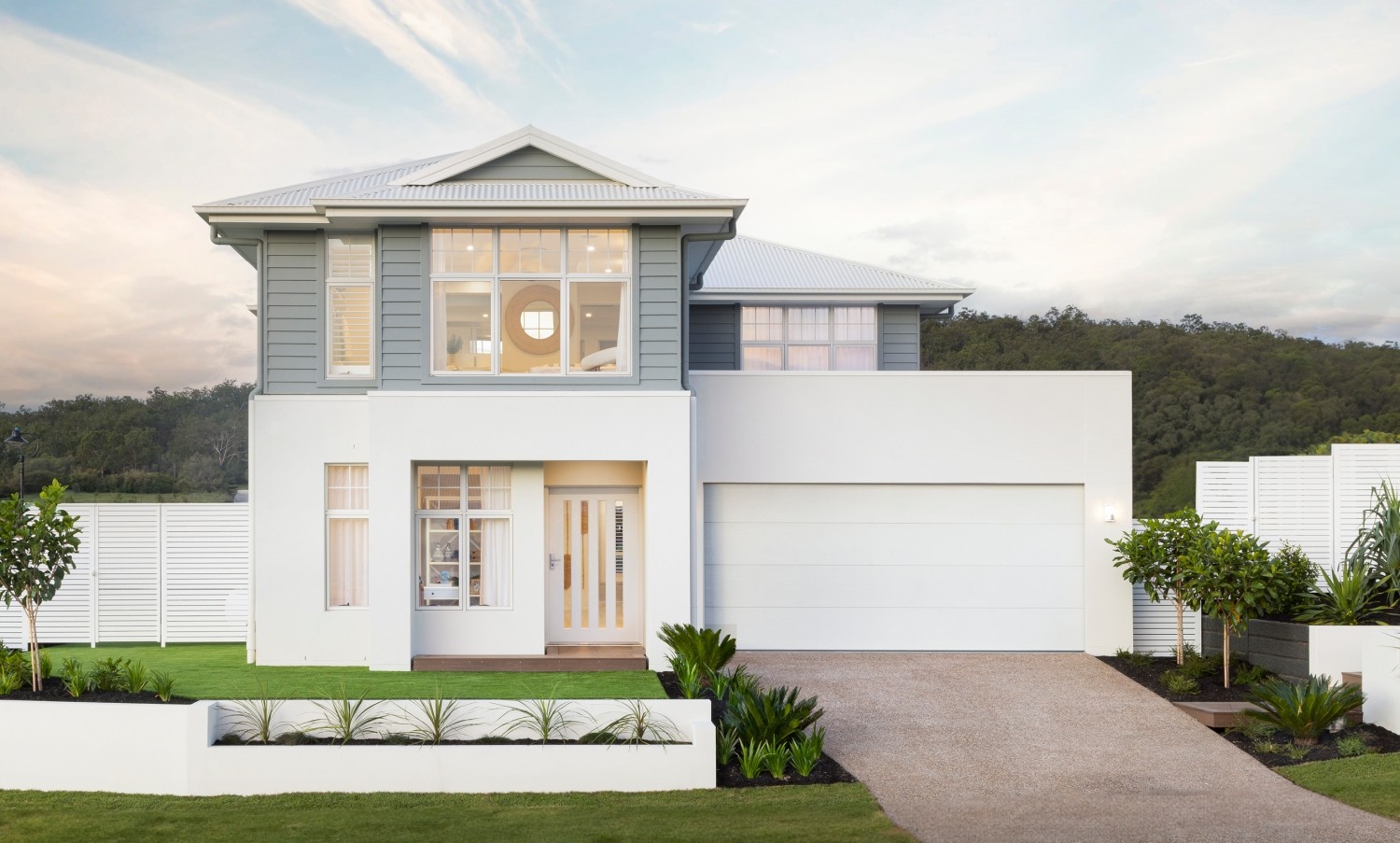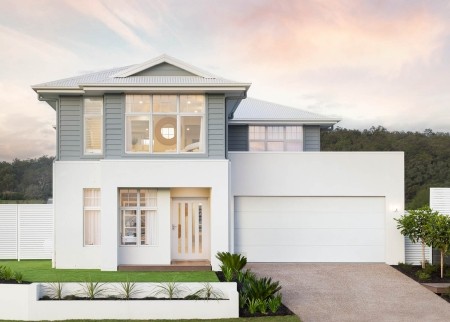How Much Do You Need for A House Deposit QLD?

If you’re looking to buy or build in Queensland, one of the biggest hurdles is saving for a house deposit. But knowing exactly how much you’ll need for a house deposit in Queensland doesn’t exactly have a one-size-fits-all answer. It depends on things like whether you’re building new, buying a house and land package or purchasing an established home. Then there are factors like your lender’s policies, government grants you’re eligible for, as well as your personal financial situation.
To help make things a little easier for you, we’ll explain everything Queensland home buyers need to know about house deposit requirements, from general percentages and costs to strategies for saving faster. We’ll also explain how Brighton Homes can help you get into your new home sooner with our exclusive offers.
The Basics: What is a House Deposit?
A house deposit is the upfront amount you pay towards the purchase price of a property before taking out a home loan. Lenders need this deposit from you to secure the loan and – more importantly for them – reduce their risk. The remaining balance of the purchase price is then covered by your lender, subject to you being approved for the loan.
House deposits are usually expressed as a percentage of the total price of the property. If you’re buying a $600,000 home and your deposit is 10%, for example, then you’ll need to contribute $60,000 upfront. But in practice, there are lots of other upfront costs to bear in mind, which we’ll cover shortly.
How Much Deposit Do You Need?
5% deposit (with LMI)
This is generally the minimum deposit required by most home loan lenders, but it does come with conditions. If you’re contributing less than 20% of the purchase price, most lenders will need you to pay lenders mortgage insurance (LMI). LMI protects the lender – not you as the buyer – in case you can’t make repayments and end up defaulting on your loan.
If you’re eligible for the First Home Owner Grant or the Home Guarantee Scheme (formerly the First Home Loan Deposit Scheme), you might be able to get a home loan with a 5% deposit and avoid LMI altogether. But spaces in these government-backed schemes are limited and subject to strict eligibility criteria.
8% to 10% deposit
In Queensland, an 8% deposit is usually the realistic minimum when you factor in all the extra upfront costs like stamp duty, legal fees, registration fees and conveyancing. A 10% deposit opens up more lending options, especially for buyers who can’t qualify for any of the government grants or who are building without a guarantor.
At Brighton Homes, we see lots of home buyers succeed with deposits in the 8–10% range, especially when they take advantage of our Build Now Pay Later program.
20% deposit (no LMI)
If you want to avoid mortgage insurance altogether and benefit from potentially better interest rates, a 20% deposit is the gold standard. Lenders see this level of deposit as very low risk, which gives you a chance to enjoy a wider range of products, more favourable loan terms and less interest over time. For a $600,000 home, that’s $120,000 upfront – not including stamp duty and other costs.
What Affects How Much Deposit You’ll Need?
1. Type of property
- Established homes: You might need to budget for a larger deposit, especially if you’re not going to get any government grants.
- New builds: If you’re building a brand-new home or buying a house and land package, you could still be eligible for the Queensland First Home Owner Grant – a one-off payment of $15,000 or $30,000 that can be used towards your deposit.
2. Loan type and LVR
Your loan-to-value ratio (LVR) is the loan amount expressed as a percentage of the purchase price. A 95% LVR, for example, means you’re borrowing 95% of the property’s value and putting in 5% as a deposit. The higher your LVR, the greater the risk to the lender – and the higher your LMI costs will be.
3. Lender policies
Different home loan lenders have different risk tolerances. Some will accept low-deposit loans with LMI, while others will demand a minimum of 10% or 20%. Things like your credit history, employment history (and stability) and debt-to-income ratio will all be indicators of your borrowing power.
4. Grants and incentives
First-home buyers in Queensland can be eligible for:
- First Home Owner Grant: A $15,000 or $30,000 one-off payment for new builds valued under $750,000.
- Home Guarantee Scheme: Lets you buy with just 5% deposit and no LMI (limited places).
- Stamp duty concessions: Partial or full exemptions depending on the purchase price and your eligibility.
How Much Deposit Do You Need To Build A House In Qld?
When building a home, your deposit works a little differently because you’ll be using a construction loan, which is drawn down in stages as construction progresses. That means the deposit size is calculated based on the combined land and build costs.
Let’s look at a few examples:
| Total price (land + build) | Minimum 8% deposit | 20% deposit (no LMI) |
| $500,000 | $40,000 | $100,000 |
| $600,000 | $48,000 | $120,000 |
| $700,000 | $56,000 | $140,000 |
These figures don’t include all the other upfront costs like conveyancing fees, legal fees, registration fees and stamp duty – although stamp duty is waived for eligible first home buyers in Queensland as of 1 May 2025.
How Brighton Homes Can Help You Get In Sooner
With our exclusive Build Now Pay Later offer, you can start building your dream home today and delay payments on your house deposit until later in the process. That means you’ll have more time to build up your savings plan while locking in today’s pricing.
Under our Brighton Pays program, we’ll pay your interest while you build with us. This can free up valuable cash flow and help lessen the financial strain of paying rent while preparing for a mortgage at the same time. It’s just another way we’re helping Queensland buyers’ step into home ownership sooner.
Upfront Costs To Budget For
Even if you’ve got your deposit ready, remember that there are other upfront costs you’ll need to cover, such as:
- Stamp duty: Waived for eligible first-home buyers on new builds.
- Conveyancing fees: Usually around $1,200–$2,000.
- Legal fees: Might be included in conveyancing.
- Registration fees: Around $200–$250 for mortgage/title registration.
- Loan application fees: Can vary depending on your lender.
- Lenders mortgage insurance: If your deposit is less than 20%.
How Much You Can Borrow And Your Borrowing Power
Your borrowing power – how much you can afford to borrow – depends on a few different personal factors like:
- Your income and employment history.
- Any existing debts and credit card limits.
- Number of dependents.
- Living expenses.
- Savings history.
Home loan lenders will use this information to see if your required loan amount is enough and determine your monthly repayments based on the interest rate, loan term and whether you’re applying solo or jointly. To find out how much you can borrow, take advantage of our borrowing power calculator to help work towards buying your dream home.
If your borrowing power doesn’t match the type of property you’re hoping to buy or build, think about reviewing your budget or exploring Brighton Homes’ flexible finance-friendly home designs.
How To Save Faster For Your Home Deposit
Saving for a deposit doesn’t happen overnight, but you can fast-track things with a few smart strategies:
1. Set a realistic savings plan
Know your goal and work backwards from there. If you’re aiming for an 8% deposit on a $600,000 home ($48,000), break it down into monthly targets over 2–3 years.
2. Create a high-interest savings account
Open a dedicated ‘home deposit’ account and automate transfers to build savings momentum. Look for accounts that reward you for regular deposits.
3. Reduce your debt
Minimise your personal loans and credit card balances, as lenders will look at your liabilities when deciding how much you can borrow.
4. Take advantage of grants and schemes
Whether it’s the First Home Owner Grant, Home Guarantee Scheme or Brighton Pays, take advantage of every support option that’s available to you. After all, every dollar counts.
5. Track your spending
Use budgeting apps or online bank tools to spot any areas where you can cut back on things, which should free up more for your deposit. Maybe you could redirect this year’s bonus income, or send any tax refunds or pay raises straight into your savings.
Pros And Cons Of Low Deposit Loans
| Pros | Cons |
| Get into the market sooner | Higher LMI costs |
| Take advantage of grants while they are available | Higher interest rates might apply |
| Might not need years of savings | Fewer options of lenders |
| Can buy while renting | Tighter eligibility criteria |
Should I Wait And Save More, Or Buy With A Low Deposit?
That depends on your priorities. If you’re in a rising market, buying with a smaller deposit (and paying LMI) might still save you money in the long run by locking in the current price of the property.
But if your current financial situation means you can continue saving – and you’d prefer lower monthly home loan repayments or to avoid LMI entirely – then waiting and aiming for 10–20% might make more sense.
Our team of experts can help you model both scenarios to see what works best for your budget.
Your Path To A Home Deposit
So, how much deposit do you need for a house in Queensland? It depends – but with a well-defined savings plan and the right home loan strategy, the path to home ownership might be closer than you think.
Our experts can guide you on how much you can afford, help calculate your upfront costs and design a new home that fits your lifestyle and your loan amount.
Contact Brighton Homes today or explore our home designs, visit one of our display homes across South East Queensland, or simply get inspired as a new home buyer.



